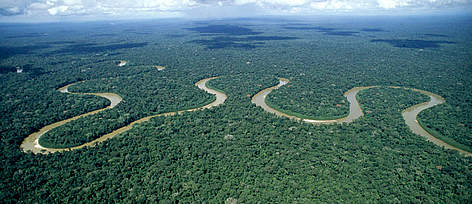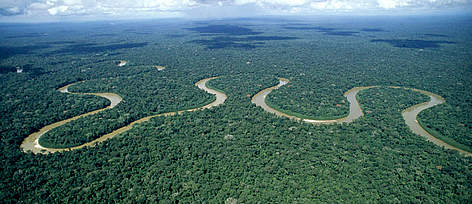
In what is being viewed as the first comprehensive estimate of threatened species in the world’s largest rainforest, a study claims that more than half the myriad tree species in the Amazon could be heading for extinction.
The Brazil nut, and wild cacao and açai trees - all important food sources, are said to be among the species expected to suffer significant falls in numbers.
Even as loggers, farmers and miners are responsible for the removal of 12% of its area, the world’s most diverse forest has endured decades of deforestation. 57% of the 15,000 tree species will be in danger, according to the researchers, if the above mentioned trend continues.
However, the number of species at risk would be restricted to a third of the total, if existing protected areas and indigenous territories across the vast area suffer no further damage.
“Forests in the Amazon have been declining since the 1950s, but [until now] there was a poor understanding of how this has affected populations of individual species,” said Prof Carlos Peres, of the University of East Anglia, one of the 158 scientists from 21 countries who worked together on the study.
“Protected areas and indigenous territories now cover over half of the Amazon basin. But forests and reserves still face a barrage of threats, from dam construction and mining, to wildfires and droughts intensified by global warming,” Peres said.
There has been a sharp decline in the rate of deforestation in the last decade in Brazil which holds 60% of the Amazon forest. However felling of trees is continuing rampantly in countries like Bolivia and Peru. Overall, an area the size of about 4,500 football pitches is still being lost every day.
Protected areas could remain largely untouched if Brazil can restrict its deforestation to current levels and other countries improve to match that.
“The vast majority of protected areas in the Amazon have no management plan or budget and few resident qualified personnel,” says Rafael Salomão, of Emílio Goeldi Museum in Belem, Brazil, and a member of the research team.
Moreover, as the global population grows there would be increased demand for beef, soy and palm oil, which drives much deforestation, there will be increase in the pressure to clear more forest.
“It’s a battle we’re going to see play out in our lifetimes,” said William Laurance, of James Cook University in Australia, who was also part of the study.
The Brazil nut, and wild cacao and açai trees - all important food sources, are said to be among the species expected to suffer significant falls in numbers.
Even as loggers, farmers and miners are responsible for the removal of 12% of its area, the world’s most diverse forest has endured decades of deforestation. 57% of the 15,000 tree species will be in danger, according to the researchers, if the above mentioned trend continues.
However, the number of species at risk would be restricted to a third of the total, if existing protected areas and indigenous territories across the vast area suffer no further damage.
“Forests in the Amazon have been declining since the 1950s, but [until now] there was a poor understanding of how this has affected populations of individual species,” said Prof Carlos Peres, of the University of East Anglia, one of the 158 scientists from 21 countries who worked together on the study.
“Protected areas and indigenous territories now cover over half of the Amazon basin. But forests and reserves still face a barrage of threats, from dam construction and mining, to wildfires and droughts intensified by global warming,” Peres said.
There has been a sharp decline in the rate of deforestation in the last decade in Brazil which holds 60% of the Amazon forest. However felling of trees is continuing rampantly in countries like Bolivia and Peru. Overall, an area the size of about 4,500 football pitches is still being lost every day.
Protected areas could remain largely untouched if Brazil can restrict its deforestation to current levels and other countries improve to match that.
“The vast majority of protected areas in the Amazon have no management plan or budget and few resident qualified personnel,” says Rafael Salomão, of Emílio Goeldi Museum in Belem, Brazil, and a member of the research team.
Moreover, as the global population grows there would be increased demand for beef, soy and palm oil, which drives much deforestation, there will be increase in the pressure to clear more forest.
“It’s a battle we’re going to see play out in our lifetimes,” said William Laurance, of James Cook University in Australia, who was also part of the study.





